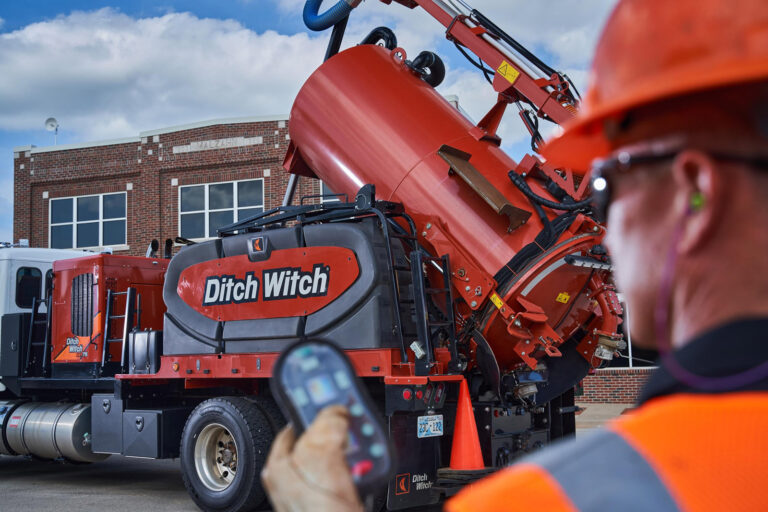From Rental Management
Trenchers are a go-to choice for utility contractors and landscapers when they want to quickly and efficiently install product, which is why it’s so important to ensure these machines are always ready and performing at their best for each new job.
Routine maintenance and adherence to best equipment practices are crucial to keeping both ride-on trenchers and walk-behind machines in top condition. But it’s not always obvious when a trencher requires maintenance. Also, best practices can vary based on factors like job type, ground conditions and seasonal changes.
Here are five tips that can help maintain and prepare trenchers for each new job, and maximize your fleet’s uptime and readiness.
Perform routine inspections. Inspecting your trenchers can help you stay ahead of wear and make sure any required maintenance is completed in a timely manner. Also, because inspections only take a few minutes, they can be easily done after each rental.
What should you be looking for during an inspection? One place to start is the digging system’s main wear component — its chain rollers. If the rollers start to look like an apple core, or if the pin is visible, then it should be replaced.
Another important component to inspect are the sprockets, which are engineered to interact with the trencher chain to enhance the overall performance and wear life of all digging components. When the teeth on a sprocket start to thin, they’re due to be replaced.
Confirm chain tension. A chain that isn’t properly tensioned can cause premature wear and affect how a trencher operates. To help avoid issues, confirm the machine’s chain has the proper tension by checking its fit and verifying it against the specification in the trencher operator’s manual.
When checking tension, the chain should neither sag nor be too tight. If a chain begins to sag, it will vibrate the equipment and cause unnecessary wear. And if it’s too tight, it can cause wear patterns to appear on the sprocket or sidebars.
If you have larger trenchers, keep in mind that they use bigger chains that will require more sag than smaller trenchers. A good rule of thumb when checking chain tension on a standard walk-behind trencher is that you should be able to fit two to three fingers between the chain and the lower part of the boom.
Address tooth issues right away. Trencher manufacturers often apply carbide to reinforce teeth strength and extend the life of the machine. When that carbide begins to wear down to the base steel, teeth become worn and risk breaking off. Teeth also can wear prematurely or unevenly. When this happens, the teeth can put unnecessary stress on the digging chain.
As a best practice, check a trencher’s teeth after every project. And don’t wait to replace teeth that have become dull or worn down — do it right away. Also consider replacing all the teeth together. This can save time and money, and minimize additional tooth wear and tear.
Keep the track system in condition. The best way to help trenchers easily navigate job sites as they go from one customer to another is to keep the track system in good shape.
Make sure the track system remains clean and free of mud, rocks and other debris. This can help prevent premature wear on embeds of the rubber track and the drive sprockets caused by intrusive debris. Also, keep debris out of the bearing area to prevent it from intruding into the roller bearings. This is especially important if you’re in a region that experiences sub-freezing temperatures. Contaminants in the track system can freeze and damage rollers, bearings and sprockets.
Ensuring the roller bearings are lubricated also will help a trencher stay productive, especially in cold, wet and muddy conditions. Maintaining the correct fluid levels in the planetary boxes is essential to preventing premature damage to internal gears.
In addition, maintain the correct track tension on your trenchers. This can reduce the risk of the track sliding off the idlers and sprocket, and damaging embeds and the track.
Adapt to winter conditions. Preparing your trenchers to work in cold weather can help keep them running effectively on job sites through the winter and prevent unnecessary breakdowns.
Regular maintenance like greasing all moving components, monitoring fluid levels and maintaining batteries aren’t specific to cold weather. These activities should always be done at regular intervals, but it’s especially important that this basic servicing is completed in cold conditions, where trenchers work harder.
Advise customers to warm up trenchers for a few minutes before they start trenching. This gives the hydraulics and oils time to get warm before the machine is put to work, which can prevent costly repairs. Customers should half throttle the engine and engage the trencher for 10 to 15 seconds before beginning regular operation.
Using the right teeth in cold conditions is also key. Alligator tooth chains and weld-on shark tooth chains are the best choices in hard, deep frost conditions. These chains can break through frozen ground just as they break through hard rock. In softer frost conditions, a combo chain is the best option.
Trencher teeth can wear faster in cold conditions, so it’s a good idea to make sure you have backups in stock during colder months. Check teeth condition at least twice daily and have replacement chains at the ready in case you need them.
Trenchers are versatile workhorses that customers rely on for a wide range of jobs. With routine inspections, regular maintenance and seasonal preparations, you can maximize the availability of these mission-critical machines and keep them running as promised for one job after another.






